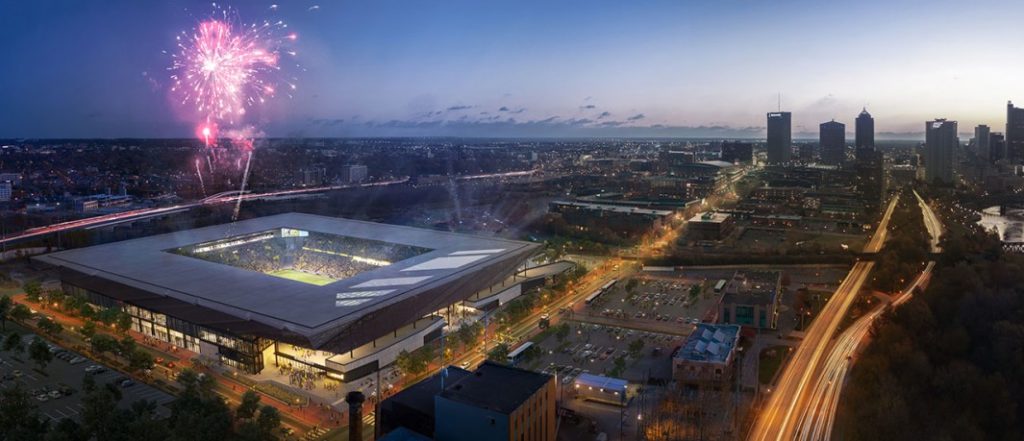
Although the project’s budget puts its contribution at $50 million, new records show that the City of Columbus‘s total cost on the new Columbus Crew stadium plan is closer to $100 million.
The Crew has been planning a new stadium in the city’s Arena District, which will anchor a larger redevelopment initiative that includes a mixed-use area dubbed Confluence Village. Helping to fund the project is a public-private endeavor that includes $50 million from the city, $45 million from Franklin County, $20 million from the State of Ohio, and $25 million from a new public authority, with Crew ownership covering the remaining cost.
While the city’s contribution is still $50 million under project’s budget, an Ohio Public Records Act request by the Columbus Dispatch uncovered information showing that the total cost to the city is nearly double the $50 million figure, coming in around $98 million. Additional costs have been covered through a separate budget that obtains funding from several different sources. Under a draft development contract released in June that includes the Crew, city and county, the city is to cover a variety of other initiatives outside the project’s budget. Those include a site remediation and a 600-car parking garage, along with the completion of a riverside park, pedestrian bridge connecting to the stadium site, the burying of nearby power lines, and road and intersection improvements near the facility.
City officials have insisted that these costs are not under the stadium project’s budget, because they are not directly related to the stadium and are instead complementary initiatives that would otherwise take place. More from the Columbus Dispatch:
[Columbus Mayor Andrew J.] Ginther spokeswoman, Robin Davis, said the cost of the other projects aren’t included in the city’s stadium total because they aren’t related to that project.
“Development projects do not happen in a vacuum,” Davis said. “Throughout the negotiations to keep the Crew in Columbus, many other projects, such as the pedestrian bridge and development of the NRI TIF, were also moving forward. The (contract) is meant to document these projects that could be complementary to the stadium.”
[Former city Development Director Steve] Schoeny said most of the other projects had been planned for years, and the city would have publicly funded them regardless of what development happened at the stadium site, which is now vacant land west of the Huntington Park baseball stadium.
For example, Schoeny, who has since left the city to become city manager of Upper Arlington, said a proposed parking garage for more than 600 cars to be built 60 feet from the stadium has no relation to the stadium project.
The Crew will break ground on the stadium Thursday, and has been expecting it to open during the 2021 MLS season.
Rendering courtesy Columbus Crew SC.
RELATED STORIES: Columbus Crew Stadium Groundbreaking Ceremony Set for October 10; Entity Created for Columbus Crew Stadium Ownership; Columbus Crew Stadium Project Lands Key Approval; Report: Agreement for New Columbus Crew Stadium Site Close; Columbus Crew SC Partners With Legends on Stadium, Training Facility Project; Task Force to Consider Future of Land Surrounding MAPFRE Stadium; IBM Tapped to Work on Columbus Crew Stadium Project; City Approves Contribution to Columbus Crew Stadium Project; Work Continues to Finalize New Columbus Crew Stadium Plans; New Columbus Crew SC Stadium Slated for Summer 2021 Opening; Columbus Crew SC Stadium Focus Groups to Solicit Feedback; New Columbus Crew Investor-Operator Group Introduced; Best of 2018, #1: Columbus and Austin MLS Stadium Plans Move Forward; Franklin County Moves Forward With Columbus Crew SC Stadium Plan; Franklin County to Vote on New Columbus Crew SC Stadium Funding; Columbus City Council Approves New Crew Stadium MOU; New Columbus Crew SC Stadium Plans Unveiled; MAPFRE Stadium Redevelopment Plan Unveiled; The Search for the Next Big Thing: MLS Facility Planning
